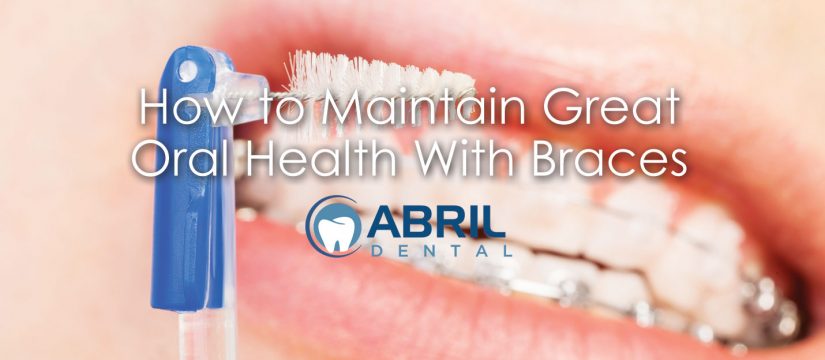
Maintaining good oral hygiene leads to a healthier mouth, healthier gums, and a healthier lifestyle. People with braces, though, should double the time that they spend on their oral hygiene. We’ve put together a list of how to sustain great oral care with braces:
1. Organize your dental equipment.
– Interproximal (or Interdental) Brush: This tool looks like a mini pipe cleaner or miniature Christmas tree. It’s great for brushing around your braces to get rid of food particles and other debris. It can be purchased online or at your local pharmacy, but you can also ask your general dentist about it.
– Four-Tuft Interproximal Brush: This brush is good for cleaning between the spaces or gaps of your teeth–if you have any. It’s like a toothbrush but it has a much narrower head to fit into small spaces.
– Floss & Floss Threader: Floss threaders are a MUST if you have braces! There’s nothing nastier than swollen gingiva peeling away from a tooth because a teenager with braces has neglected to floss for half a year. Believe me — I’ve seen (and smelled) it! Flossing (with a floss threader) is arguably more important than brushing for orthodontic patients. Floss at least once per day, preferably at night, to avoid developing cavities and gum disease.
– Toothbrush: Who could ever forget our reliable good friend? This simple and useful dental tool is still king. Practice the two-minute rule while brushing twice daily. Two minutes will provide enough time to remove all plaque, and make sure to spend at least one minute each on your top and bottom teeth. People with braces should change their toothbrush more often since the brackets of the braces wear out the toothbrush faster.
2. Brush in between your braces
So now you’re aware of what tools you need to maintain good oral health, and you know that your oral health is in your hands. When brushing, keep the toothbrush at a 45-degree angle toward the gumline. Use your interproximal brush to remove large food particles stuck in between your braces. Use a mirror to check that you didn’t miss any spots.
3. Don’t forget to floss!
We know how important flossing is, but are you flossing your teeth properly? When you have braces, grab at least 24 inches of floss, and place the floss through the hole in the floss threader. Leave an equal amount of floss dangling from each side of the threader’s hole. Use the tip of the floss threader to maneuver under your orthodontic wire. Hold the floss tightly between your index fingers and thumbs, and slide it gently in an up-and-down motion between your teeth. Curve the floss around the bottom part of each tooth gently, and make sure you go underneath the gum line. Always remember to floss gently and avoid forcing the floss to prevent cutting your gum tissue.
4. Brush at least two times per day
Whether you have a manual or electric toothbrush, brush gently. It may be tempting to brush harder when you have braces since you feel that you must put forth more effort to clean your mouth. But this is not the case. Just find the proper angle so that the bristles reach the bottom of your teeth, and brush in a gentle, circular motion. We tend to brush our teeth too hard because we think that doing so can help remove plaque. But you must remember that plaque is easily removed by moderate and frequent brushing. Scrubbing your brush too hard on your gums and teeth will do more harm than good, such as making your gums bleed.
